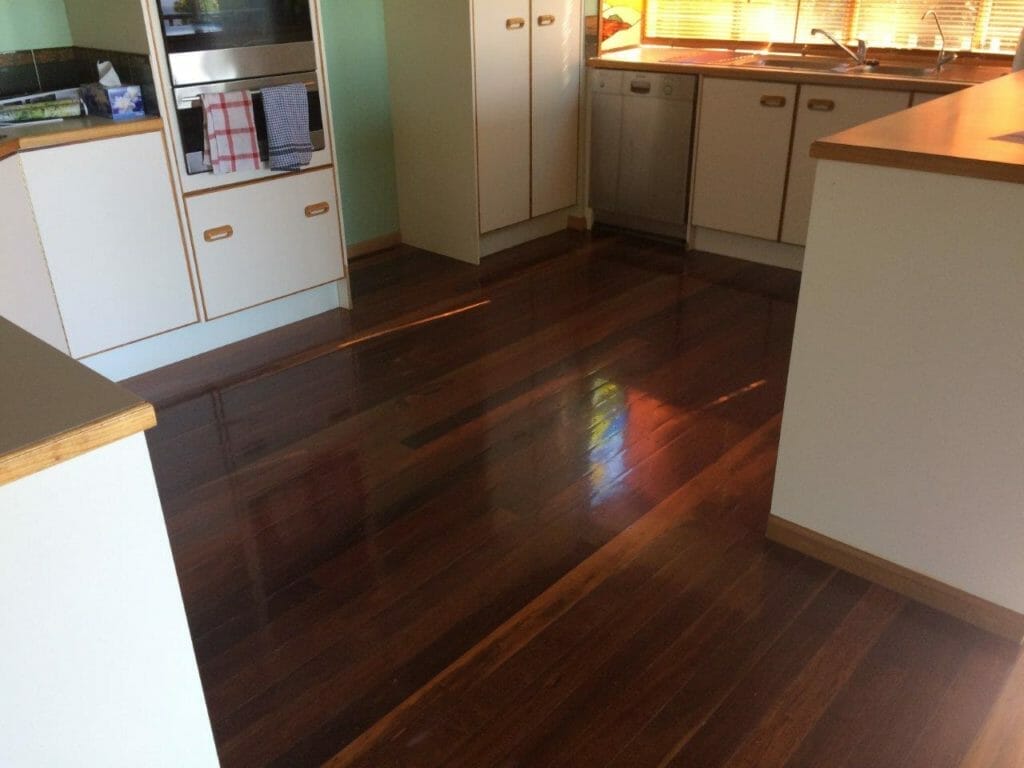Sanding and polishing the floor for beginners.
You’ve chosen to install hardwood floors or renovate your existing wooden floors to give them new life. That is an excellent investment that will undoubtedly revitalize the appearance and feel of your house! However, if you are inexperienced with the procedure, it can be intimidating not knowing what will be done or how long it will take. And, while it may sound complicated, reading up on what this includes may assist in informing you of what has to be done and familiarising you with the do’s and don’ts to ensure that Melbourne’s floor sanding methods employed accomplish the desired outcomes.

When do I need to resurface my floor?
While it is well-known that wooden flooring is long-lasting and robust, years of usage can cause damage to the surface. If not maintained properly, the finish might degrade over time, appearing hazy or damaged due to the use of solid floor cleaners, high heeled shoes, and exposure to dampness. And, while floor polish may give your floors a glossy sheen when appropriately done, if there are deep gouges in the wood and too many scratches, you may need to consider redoing your floors. This includes sanding and polishing the floor, which will do wonders for worn floors.
How to Prepare for Floor Sanding and Polish?
If you are presently occupying the space that requires resurfacing, remove all belongings and furniture to allow workers to work freely. This category also contains staples and tacks. Ascertain that the space is free of obstructions and that your contractor has continuous access to water and power, as they are necessary for floor sanding.
Additionally, if you have not yet completed painting your walls, do it immediately! However, leave the last coat off the skirting boards since it will undoubtedly come into touch with the floor sander.
If you cannot completely clear the space, cover any remaining objects with a towel to protect them from the dust generated by the sanding process. Additionally, ensure that there is sufficient illumination in the space for your contractors to work. Because sanding generates a lot of dust, it’s a good idea to cover vents, windows, and other openings to keep dust out.
What tools do you need to polish floorboards?
- Hand sander
- Nail punch
- Safety glasses
- Drum sander
- Dust mask
- Earmuffs
- Hammer
How do I prepare to sand floorboards?
Before beginning, prepare the area for sanding. There is a possibility that you have a carpet covering over your timber floor that will need to be removed. The most effective method is to cut it into squares with a sharp utility knife and remove them one by one. Certain homes have vinyl tiles installed over the timber floor, which must also be removed before sanding.
- The room where the job is being performed should be thoroughly vacuumed to prevent dust from entering and adhering to anything.
- Remove any staples from the floorboards with pliers and level any nails with a nail punch to create a level and sandable floor surface.
- Ensure that you open your windows and close your doors to maintain a dust-free environment in your area.
- Put on a dust mask and protective eyewear.
Is it easy to sand your floors?
Sanding wood floors is a time-consuming but relatively straightforward operation. Sanding and refinishing wood floors on your own can save you money, and even an inexperienced homeowner can likely do a better job than the cheapest handyman.
How much does it cost to sand and polish timber floors?
In comparison to other household duties, the cost of hiring a professional to sand and polish your timber floors do not have to be unreasonably high. Sanding and polishing costs range from around $25 per square meter + GST to nearly $60 per square meter. This cost may vary depending on the condition of the floor and the type of polish required.
Is a timber flooring professional will know exactly what to do?
The simple answer is that you absolutely can take a do-it-yourself method, but our advice comes with a caveat. While polishing a floor is simple, sanding it yourself will not produce the same results as hiring a professional.
Floor sanders have a reputation for being tough to maneuver, making it difficult to achieve an equal finish. Additionally, bear in mind that polishes and stains may respond differently depending on the type of wood used to construct your floor. An expert in timber flooring will know precisely which waxes and chemicals to use on your floors.
If the scratches, dents, and gouges on your timber floors are highly evident, we strongly urge you to seek the services of a professional.
References:
Nuno C. Cruz, Flávio C. Silva, Luís A.C. Tarelho, Sónia M. Rodrigues. (2019) Critical review of key variables affecting potential recycling applications of ash produced at large-scale biomass combustion plants. Resources, Conservation and Recycling 150, pages 104427.
Lundgren, D.A., Vanderpool, R.W. and Liu, B.Y.H. (1990), Aerosol Generation from the Sanding, Cutting, and Breaking of Floor Tiles. Part. Part. Syst. Charact., 7: 121-126. https://doi.org/10.1002/ppsc.19900070123
Guo, Y.; Zhu, S.; Chen, Y.; Li, D. Thermal Properties of Wood-Plastic Composites with Different Compositions. Materials 2019, 12, 881. https://doi.org/10.3390/ma12060881

